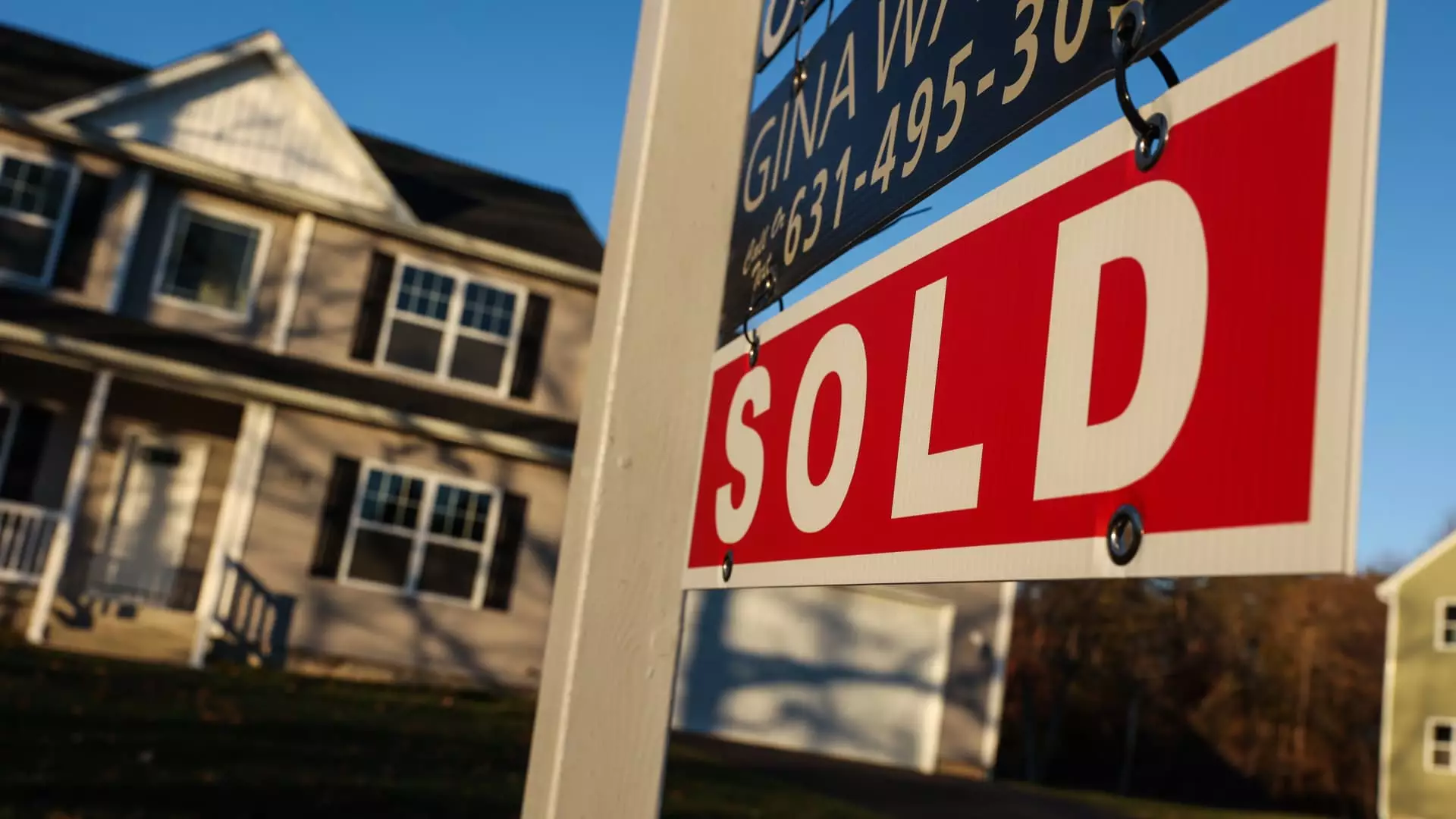A notable shift in the housing market emerged in October, driven largely by a significant reduction in mortgage rates, encouraging potential homebuyers who had delayed their purchases throughout the sluggish summer months. The National Association of Realtors (NAR) reported a 3.4% increase in sales of previously owned homes, reaching an annualized rate of 3.96 million units. This surge also marked a welcome 2.9% rise compared to October of the previous year, representing the first annual increase in over three years, a much-needed sign amidst ongoing economic concerns.
The resurgence in home sales is closely linked to the declining trend of mortgage rates. Throughout August, the average rate for a 30-year fixed mortgage hovered around 6.6%, gradually decreasing to a low of 6.11% by mid-September. This dramatic shift has proven pivotal in stimulating the housing market, as many buyers who had been holding back on purchasing finally took the plunge. Nevertheless, it is crucial to recognize that these figures are primarily reflective of contracts signed during previous months, specifically in August and September, when buyers were responding to the more favorable financing conditions.
Lawrence Yun, chief economist at the NAR, expressed cautious optimism regarding the state of the housing market. He suggested that the worst phase of declining home sales might be behind us, bolstered by factors such as increasing inventory levels and a resilient job market. However, he acknowledged the continued importance of affordable mortgage financing for aspiring homeowners. Despite the recent drop in rates, many first-time buyers still face challenges, as the overall environment remains price-sensitive.
As of the end of October, the inventory of available homes for sale reached 1.37 million units, representing a robust increase of 19.1% from the same month in the prior year. This translates to a 4.2-month supply at the current sales rate, still falling short of the optimal six-month benchmark typically regarded as balanced for both buyers and sellers. The persistent tight supply continues to exert upward pressure on home prices. The median home price in October climbed to $407,200, which reflects a 4% year-over-year increase.
Interestingly, the market is demonstrating different levels of engagement across various price tiers. Homes at the higher end of the market appear to be experiencing a surge in activity compared to lower-priced options. Yun highlighted the need for a further 30% increase in inventory to restore pre-COVID market conditions, indicating that while some progress has been made, there is still significant room for improvement.
The demographic landscape of homebuyers is also evolving. The proportion of all-cash buyers dipped slightly to 27%, a minor decrease from 29% in October of the previous year. Although the share remains historically high, the easing of mortgage rates appears to have incentivized more buyers to seek financing options rather than paying cash outright. Additionally, first-time buyers, traditionally a significant segment of the housing market, accounted for merely 27% of sales in October, a decline from 28% the year prior. Typically, this group comprises 40% of total sales, underscoring the challenges many new entrants face in an increasingly competitive market.
Compounding the situation, mortgage rates are again on the rise, with recent figures indicating a rate of 7.05% for a 30-year fixed mortgage. Despite these challenges, a recent report from Redfin indicated a surge in buyer interest, particularly in the weeks following the election. Their demand index reported a remarkable 17% year-over-year increase during a specific week in mid-November, signaling a potential turnaround in buyer sentiment.
October’s home sales data demonstrates a noteworthy recovery spurred by declining mortgage rates and increased demand, despite the hurdles of high prices and restricted inventory. Here, the forces of pent-up demand and potential shifts in buyer behavior align in a dynamic market landscape. If these trends persist, the housing market may be inching closer to a more balanced state, though challenges remain for first-time buyers and those seeking affordable financing options. As we move forward, ongoing monitoring of economic indicators will be essential to understanding the full implications of this evolving scenario.

Leave a Reply